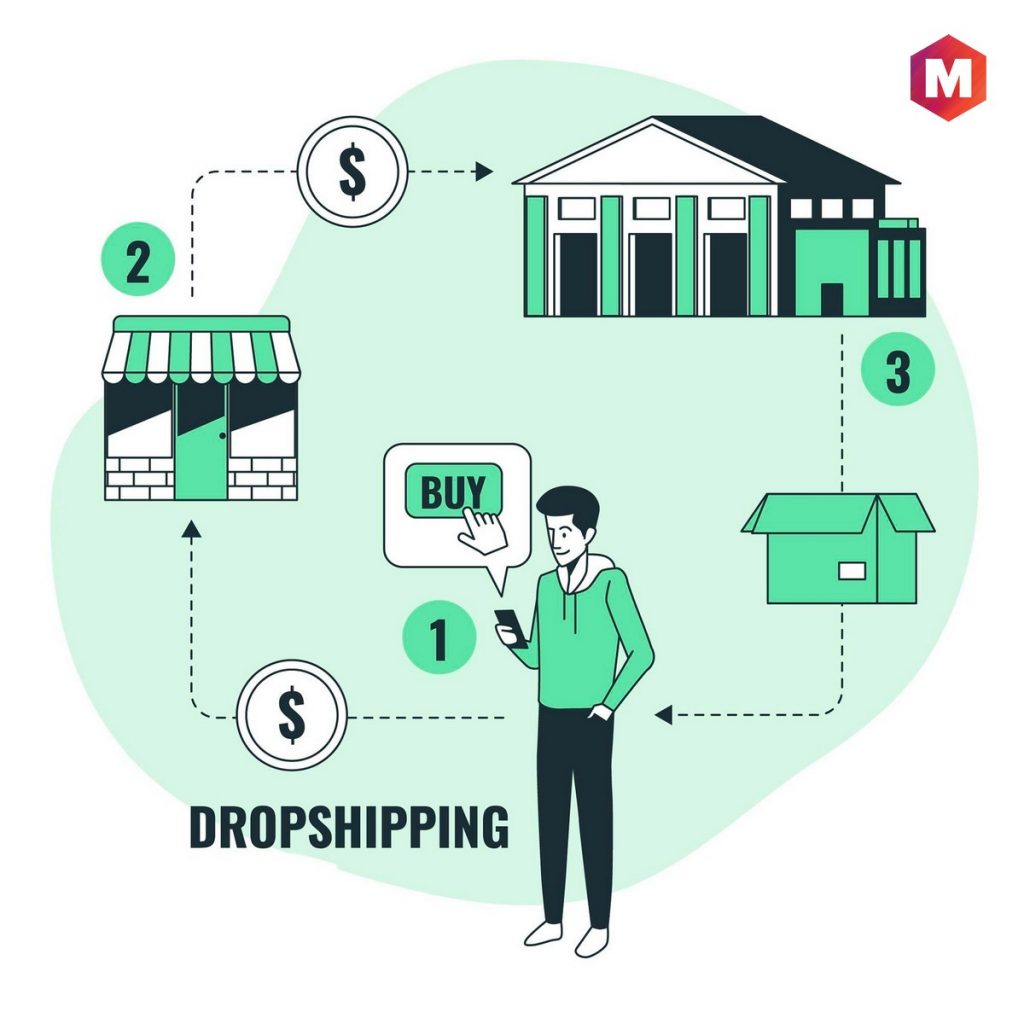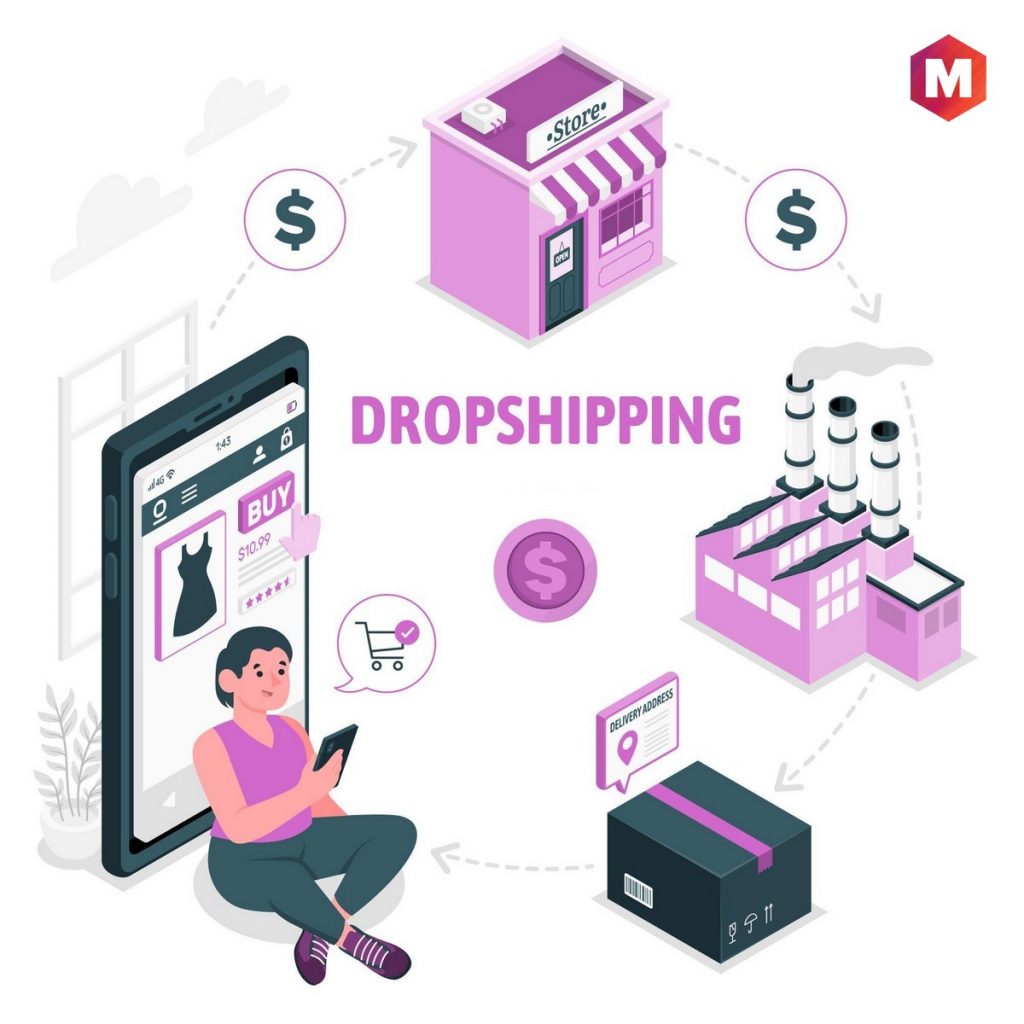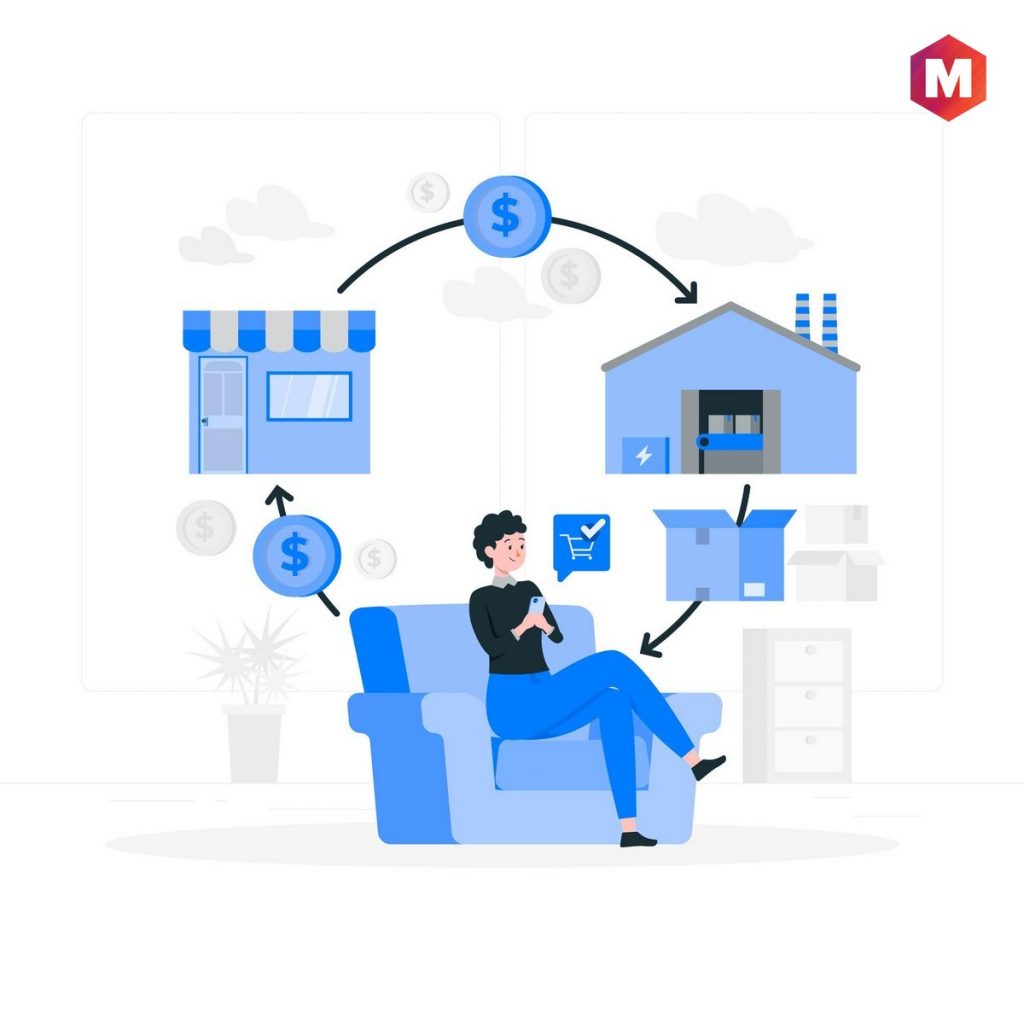Dropshipping is a business model in which e-commerce entrepreneurs sell products without having to carry any inventory. When a store owner receives an order from a customer, they simply contact the supplier, who will then ship the products directly to the customer’s door.
Dropshipping is a great way to start an e-commerce business with little up-front investment, and it’s a popular business model for many online entrepreneurs. A dropshipping store is one that purchases inventory and fulfills services from a third party rather than storing and shipping the items itself.
Table of Contents
What is dropshipping?
Dropshipping is the retail fulfillment practice of purchasing goods from a third party and delivering them to customers, rather than warehousing them. Dropshipping is an eCommerce business model in which online stores don’t keep the products they sell in stock. Instead, when a store owner receives an order from a customer, they purchase the item from a third party – usually a manufacturer or wholesaler – who then ships it directly to the customer.
Dropshipping allows store owners to start and run their businesses with very little up-front investment. Dropshipping is a popular business model for new eCommerce entrepreneurs because it’s simple to set up and manage, and it doesn’t require a large up-front investment. You can also run your dropshipping business in your spare time – you don’t need to quit your job to start a successful store.
Meaning of Dropshipping
Dropshipping is a business model in which eCommerce entrepreneurs sell products without having to carry any inventory.
When a customer orders from your store, you simply contact your third-party supplier, who will then ship the products directly to your customer’s door.
Supply chain management can be a complicated and time-consuming process, but dropshipping allows you to focus on other areas of your business.
One of the great things about dropshipping is that you can start your own online store without any upfront investment. You don’t need to carry any inventory, which means you don’t have to worry about storage costs or managing stock.
All you need is a domain name and hosting, and you can launch your own eCommerce store through your own website.
If you’re looking for a dropshipping supplier, there are a few things to keep in mind. First, you want to make sure that they are reliable and can provide good customer service.
You’ll also want to find a supplier that offers a dropshipping model. This means that they will ship the products directly to your customers, so you don’t have to worry about anything.
Dropshipping is a great way to get started in eCommerce, and it’s a perfect solution for entrepreneurs who are looking for a low-cost way to start their own business.
Who is a drop shipper?
A drop shipper is a manufacturer, wholesaler, or another supplier who offers products for sale with the Dropshipping business model. Dropshippers usually offer a wide variety of products, and they ship those products directly to the customer’s door.
How does dropshipping work?
Some of the easy steps through which Dropshipping works are:
- A customer visits your online store and orders a product.
- The order is forwarded to the dropshipper.
- The Dropshipper ships the product directly to the customer.
Dropshipping is a business model in which e-commerce entrepreneurs sell products without having to carry any inventory. When an online store owner receives an order from a customer, they simply contact the supplier, who will then ship the products directly to the customer’s door.
How to Choose the Best Dropshipping Suppliers
The Dropshipping business model is based on relationships with Dropshipping suppliers. These are the manufacturers, wholesalers, or other sources of products that you’ll be Dropshipping.
To find Dropshipping suppliers, you can search online directories, such as AliExpress and Oberlo, or contact manufacturers directly to see if they offer Dropshipping services. Once you’ve found a Dropshipper you want to partner with, you’ll need to apply to their Dropshipping program.
When choosing a Dropshipper, you should consider the following factors:
1. Product selection
Make sure the Dropshipper offers a wide range of products that appeal to your target market.
2. Shipping times and costs
Find out how long it will take for the Dropshipper to ship orders to your customers, and how much you’ll be charged for shipping.
3. Order minimums
Some Dropshippers require you to meet a minimum order quantity, while others have no minimum order requirements.
4. Returns policy
Make sure the Dropshipper has a generous returns policy, as this will reflect positively on your business if there are any problems with orders.
Benefits of Drop Shipping
There are several benefits of dropshipping that dropshipping companies or dropshipping stores or dropshipping sellers can enjoy-
1. Low Start-Up Costs
Since you don’t need to carry any inventory, you can start Dropshipping with very little up-front investment.
2. Easy to Start
Dropshipping is a simple business model that doesn’t require much experience or capital to start.
3. Low Overhead
Dropshipping businesses have low overhead costs since they don’t need to carry any inventory.
4. Flexible Location
Dropshipping businesses can be run from anywhere in the world as long as there is an internet connection.
5. Wide Selection of Products
Dropshippers have access to a wide range of products since they are not limited by the space in their warehouse.
6. Easier to Test
Dropshipping businesses are easier to test since you can start with a small inventory and add more products as you go.
7. Easier to Scale
Dropshipping businesses are easier to scale since you can add more products and suppliers as your business grows.
If you’re looking for a business model with low start-up costs and easy to manage, Dropshipping is a great option. Now that you know the basics of Dropshipping, let’s take a look at how to start a Dropshipping business.
How to Start Dropshipping in 8 Steps
Dropshipping is a great way to start an online business with little up-front investment. Follow these 8 steps to start Dropshipping
1. Find a Dropshipping niche
The first step to starting Dropshipping is to find a niche. A Dropshipping niche is a group of potential customers with common interests. To find a Dropshipping niche, you can use Google Trends to research popular trends and Dropshipping ideas.
2. Choose a Dropshipping platform
The next step is to choose a Dropshipping platform. There are a few different options when it comes to Dropshipping platforms, but the most popular is Shopify. Shopify is a Dropshipping platform that allows you to create an online store and sell products.
3. Set up your store
Once you’ve chosen your Dropshipping platform, it’s time to set up your store. This involves choosing a domain name, selecting a theme, and adding products to your store.
4. Choose your Dropshipping suppliers
The next step is to choose Dropshipping suppliers. Dropshipping suppliers are companies that manufacture and ship products on behalf of retailers. There are a few different ways to find Dropshipping suppliers, but the most popular is through online directories, such as AliExpress and Oberlo.
5. Choose the products you want to sell
Once you’ve found Dropshipping suppliers, it’s time to choose the products you want to sell. The best way to do this is by considering the needs of your target market and the trending products in your niche.
6. Add products to your store
After you’ve selected the products you want to sell, it’s time to add them to your store. This involves creating product listings and adding product images.
7. Process orders
The next step is to process orders. When an order is placed on your store, you will need to contact the Dropshipping supplier and provide them with the customer’s shipping information. The Dropshipping supplier will then ship the product directly to the customer on your behalf.
8. Market your Dropshipping business
The final step is to market your Dropshipping business. There are a few different ways to market Dropshipping businesses, but the most popular is through social media, such as Facebook and Instagram. You can also use Google AdWords to advertise your Dropshipping business.
Cons of dropshipping
1. Low margins
One of the biggest cons of Dropshipping is that it has low margins because dropshippers have to pay for the cost of goods, shipping, and marketing. As a result, Dropshippers typically have lower profit margins than other types of businesses.
2. Inventory issues
Another con of Dropshipping is that it can be difficult to keep track of inventory as Dropshippers rely on suppliers to ship products to customers on their behalf. As a result, Dropshippers may not always know when products are out of stock.
3. Shipping complexities
The third con of Dropshipping is shipping complexities. This is because Dropshippers have to ship products from their suppliers to their customers. This can be a complex and time-consuming process.
4. Supplier errors
Another con of Dropshipping is supplier errors. This is because Dropshippers rely on suppliers to ship products to customers on their behalf. As a result, Dropshippers may occasionally receive defective or incorrect product shipments.
5. Limited customization and branding
The final con of Dropshipping is that it has limited customization and branding options. This is because Dropshippers typically sell products that are already branded by their suppliers. As a result, Dropshippers have little control over the look and feel of their products.
How do dropshippers make money?
Dropshippers make money by selling products at a higher price than they pay for the goods. Dropshippers typically make a small profit on each sale, but they can make up for this by selling large volumes of products. Dropshippers also incur other costs, such as shipping and marketing.
Is dropshipping legal?
Dropshipping is a legal business model. Dropshippers are not required to hold inventory or ship products to customers. Dropshippers simply sell products that are manufactured and shipped by their suppliers. Dropshipping is similar to other types of businesses, such as wholesaling and manufacturing.
Can you do dropshipping on Amazon?
Dropshipping on Amazon is not allowed. Dropshippers are not permitted to sell products on Amazon that they do not own or manufacture. Dropshipping is considered a type of “supplier fraud” by Amazon. Dropshippers who attempt to sell products on Amazon will have their accounts suspended.
What’s the difference between dropshipping and retail arbitrage?
The main difference between dropshipping and retail arbitrage is that Dropshippers do not need to purchase inventory upfront, while retail arbitrage requires the purchase of inventory. Dropshipping is also a more passive business model, while retail arbitrage is more active. Dropshipping also has lower margins than retail arbitrage.
What’s the difference between dropshipping and private labeling?
The main difference between dropshipping and private labeling is that Dropshippers do not need to create their own products, while private labelers do. Dropshipping is also a more passive business model, while private labeling is more active. Dropshipping also has lower margins than private labeling.
What’s the difference between dropshipping and eCommerce?
The main difference between dropshipping and eCommerce is that Dropshippers do not need to carry inventory, while eCommerce businesses do. Dropshipping is also a more passive business model, while eCommerce is more active. Dropshipping also has lower margins than eCommerce.
Conclusion!
Dropshipping model is a business model in which e-commerce entrepreneurs sell products without having to carry any inventory. Dropshippers source their products from a third-party supplier who ships the products directly to the customer on behalf of the retailer.
As a get-rich-quick scheme, dropshipping is not a sustainable business model in the long run. The dropshipping business model is only profitable if you can source high-quality products at a low cost, and if you can find a niche market with little competition.
To be successful with dropshipping, you need to do your market research and choose a niche with little competition. You also need to have a fulfillment process in place to ensure that your products are delivered on time and of good quality. If you can do these things, dropshipping can be a profitable business model.
Thank you for reading! I hope this article was helpful in understanding dropshipping.
Liked this post? Check out the complete series on E-Commerce


